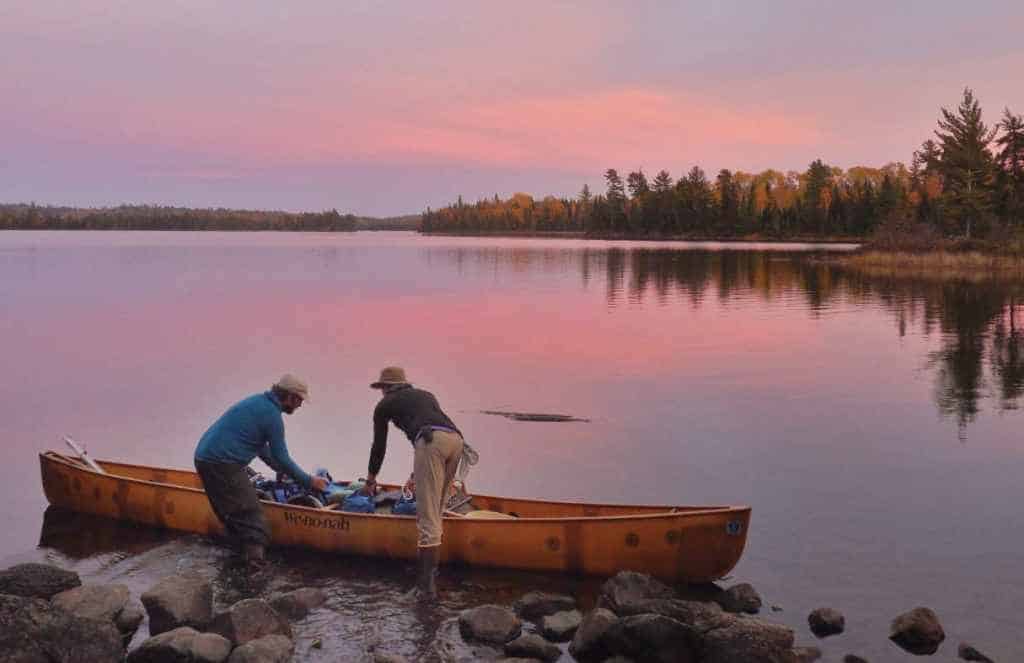
Plugged In
By Kate Seitz
Dave and Amy Freeman spent a year in the Boundary Waters, using social media to inspire others to protect the wilderness.
One of the greatest gifts that the Boundary Waters Canoe Area Wilderness bestows on its visitors is a sense of solitude. When people set out from one of the hundreds of entry points into the BWCAW, they leave behind many modern comforts of daily life in order to gain a solitary wilderness experience unlike any other on earth. “Unplugging” is one of the biggest appeals for visitors to this nearly 1.1-million-acre wilderness.
Yet when Ely- and Grand Marais-based wilderness guides Dave and Amy Freeman embarked on a one-year excursion into the BWCAW on September 23, 2015, many people wondered how they would fare, being so disconnected for such a long time.
In fact, the Freemans were readily equipped to stay in touch while they were away; technology was an essential part of their journey, dubbed A Year in the Wilderness, wherein they would bear witness to the Boundary Waters, share it with others and raise awareness about the risks facing this canoe country.
The Freemans took on the idea as part of the Save the Boundary Waters campaign, whose goal is to protect, in perpetuity, the Boundary Waters from proposed sulfide-ore copper mining on the wilderness edge. (See “Northwoods Mining Update” on page 19.)
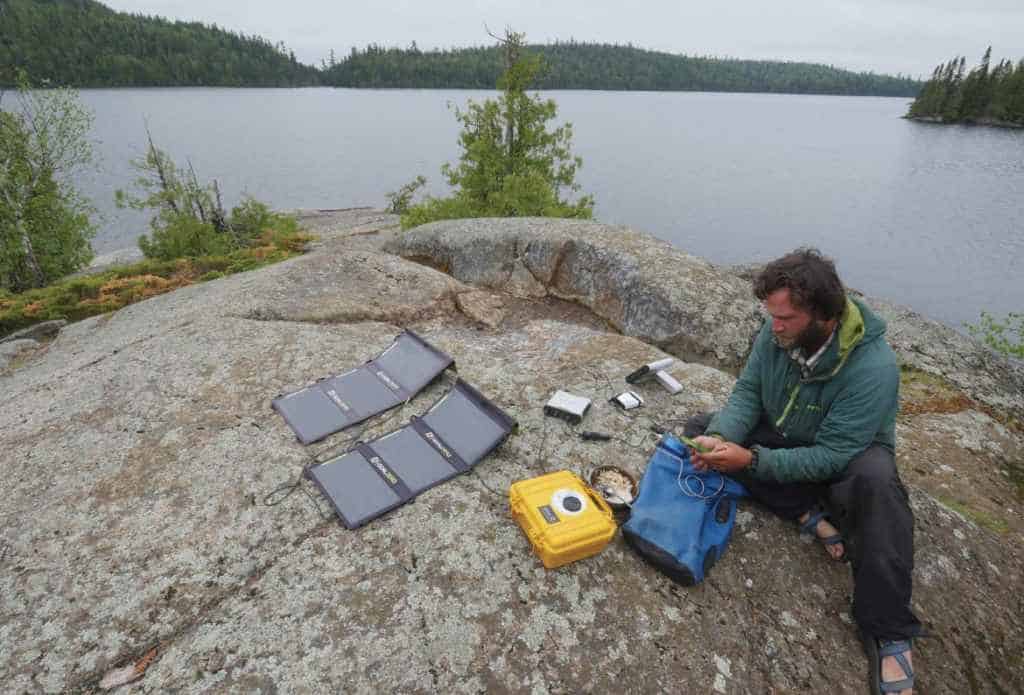
Dave and Amy brought with them cell phones, a satellite phone, a laptop and an ebook reader, a digital camera system, and four 20-watt portable solar panels to keep everything running. Armed with these tools and their renowned sense of adventure, they bid farewell to modernity (well, most of it) and began their quest.
Into the Wild
Many visitors to the Boundary Waters talk about their first visit with a kind of reverence used when describing a spiritual experience or pilgrimage. The solitude, closeness to nature and sense of awe of being in the BWCAW create a lasting impression and a desire to return, again and again.
Amy Freeman was in her early teens the first time she visited the BWCAW. Her family was overloaded with gear and traveled a portage-intense route, a method which she now knows is less than ideal. Still, she fell in love with the area. “I was jumping at any opportunity after that to get into the Boundary Waters,” she says.
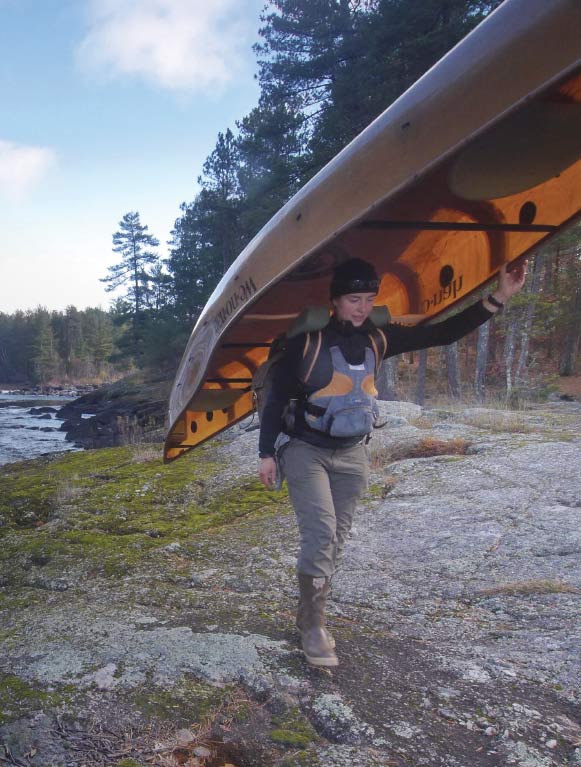
The Boundary Waters was also Dave’s first real wilderness experience. “It was my introduction to wilderness and wild places, and sent me down a path that I probably wouldn’t have taken if I hadn’t been to the Boundary Waters. It is where I work, as a canoe-trip guide in the summers and dog-sledding guide in the winters. I live on the edge of it; it’s a central part of my life,” he says.
The Campaign to Save the Boundary Waters gave the Freemans a unique opportunity to contribute to the effort as well as to engage a much broader—and younger—audience in getting to know the wilderness. Using almost daily social media postings, they helped new audiences fall in love with this one-of-a-kind place and act to protect it, even if they hadn’t yet visited it themselves.
Instant Gratification
While they traveled through the seasons in the Boundary Waters, Dave and Amy were presented with an unfamiliar luxury: a self-directed pace with time to watch nature unfold. “It felt like on this trip this was our chance to slow down and get in tune with the land and the water, to get to know it even more intimately than we had before,” Amy says.
Dave elaborated. “If we found a beautiful place and we wanted to sit and observe, say, a dragonfly nymph crawling out of the water to latch onto a rock and hatch, we could do that and capture that and share it.”
They were also more alone than they had been on previous trips. As the 2015 winter approached, the Freemans camped in the Knife Lake region and didn’t see anyone else for a month. They did, however, have wild visitors: a pack of wolves traveled just on the outskirts of their camp. “We could hear them barking and yipping, not howling, just communicating like they do when they are close together,” Dave says. “That was really neat to have them be so close.”
Winter brought ice-in, and the Freemans had to learn how to safely navigate the newly frozen waterways, breaking through the thin first layers near shore or, as the season progressed, towing their canoe across the brittle ice. During the winter months, they traded in their canoe for a toboggan and skis, and traversed with the help of three sled dogs. One of the dogs, Tank, remained with them through the summer and fall.
While these remarkable experiences were cherished by Dave and Amy, they were also almost immediately shared with the online followers of the Campaign. On a near-daily basis, Dave or Amy posted a photo and a message to their social media channels: Instagram, Facebook and Twitter, as well as a blog. They shared that day’s highlight, then directed followers to take action by signing petitions and maintaining pressure on key agencies and legislators to prevent sulfide mining from being permitted so close to the BWCAW.
“We gave people constant reminders that the Boundary Waters is still here and the issue [of protection from copper-nickel mining] is really important. We felt that if we could keep it in people’s consciousness, they would continue to take action,” Dave says.
They also remained focused on survival and fulfilling their mission of bearing witness, visiting more than 500 lakes and rivers, staying at more than 120 campsites, and traveling more than 2,000 miles over the course of their 12 months.
The fruits of their labors began to pay off, first attracting the attention of those who knew about the Boundary Waters, then engaging concerned citizens across the world who learned about the BWCAW and its importance. Last summer alone, when the U.S. Forest Service was considering the renewal of two Twin Metals’ sulfide-ore copper leases near the Boundary Waters, the Campaign and its partners received more than 74,000 signatures in support of protecting the watershed.
The media started paying attention, too. Doug Niemela, national campaign manager for Campaign to Save the Boundary Waters, says “The Freemans had a huge following on social media and across their blogs for the campaign, National Geographic and Canoe & Kayak magazine. They even captured the attention of NBC’s TODAY Show as well as television and print media in Minnesota and across the country.”
Additionally, when the Freemans departed the BWCAW on September 23, 2016, after 366 days, they were greeted by a flotilla of 60-70 boats that journeyed up Birch Lake to join them on their final paddle out of the wilderness. At a welcome home party in Ely, MN, more than 300 people celebrated their return; at a similar party in Minneapolis, more than 400 attended.
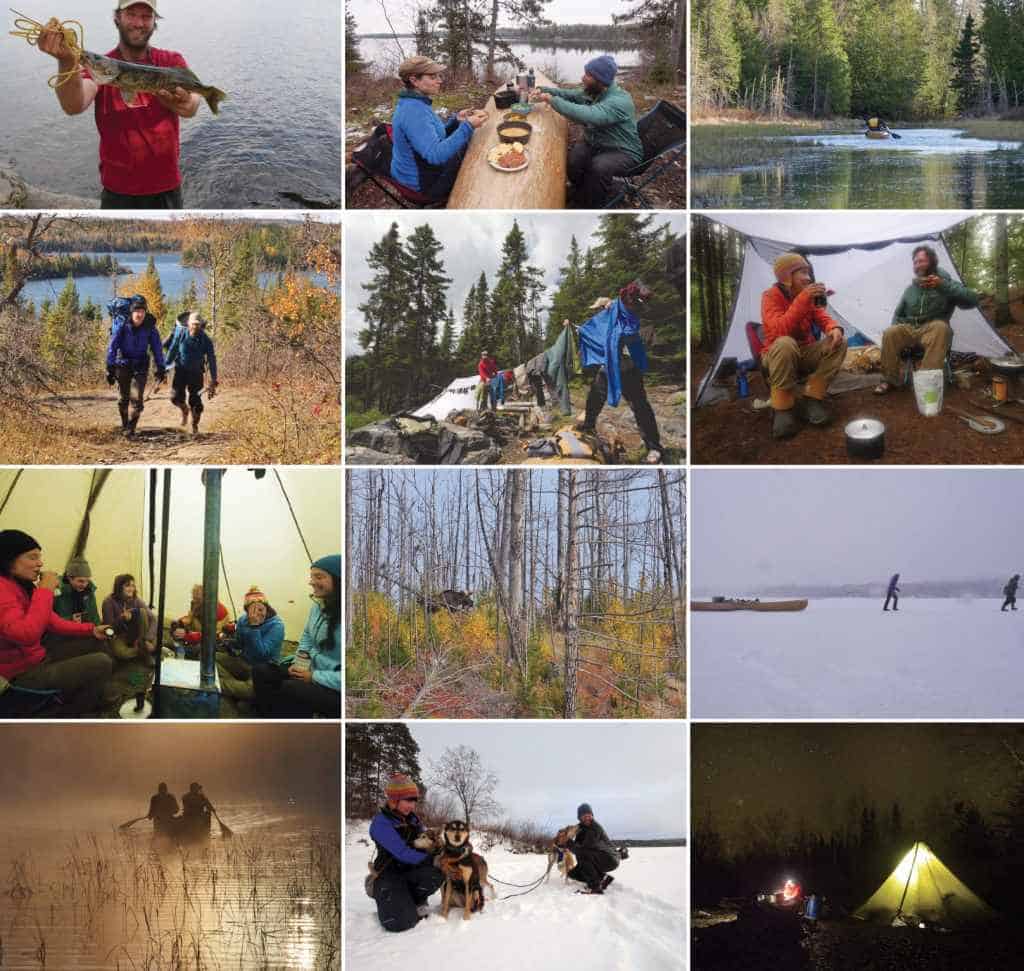
Personal Connections
Perhaps most inspiring are the stories of the youngest campers who learned about the Freemans via social media and volunteered to visit them, bringing in needed supplies and bringing out items they no longer needed.
Rebecca Gaida, a 20-year-old from Victoria, MN, first experienced the BWCAW when she was 14 years old, with the Northern Lakes Girl Scout Canoe Base (NLCB). The trip sparked a love of wilderness, she says. “It’s where I learned skills like paddling and portaging, and it is those skills that taught me I am stronger than I think I am and I can do anything.”
Last summer, Rebecca, who is now a guide for NLCB, and Trina, another guide, led a group of Scouts on a five-day resupply to the Freemans, on Knife Lake. “We were all so excited to meet the Freemans,” she says. “They taught us a lot about protecting the wilderness and the uniqueness of this wild place.”
Rebecca also is personally invested in protecting the wilderness. “After my first trip, I knew the
BWCAW was someplace special,” she says. “I know that protecting the wilderness is not about me; it is about the girls that have yet to see it. It is for them that I want to protect it, that they might see the wilderness someday and love it like I do.”
Helen Clanaugh is a ninth grader from Duluth who went on a resupply trip with her father, David, and family friend, Don Watson. It was her first foray into the Boundary Waters and it was challenging, with spring snow and long portages, but she persevered and came out stronger for it.
Helen posted her experiences on social media, shared them with her family and friends, and then looked for additional ways to support the Campaign, including a school research project.
“I want to share my experience so that others can be motivated to protect this precious place,” Helen says. “I want kids in future generations to be able to experience the Boundary Waters as I did. When kids are given the opportunity to get immersed into the wilderness, they are more able to be open to new and different ways of learning. Through the challenge of it all, we learn how strong we really can be. Through the beauty of it all, we realize how breathtaking the world is.”
Continuing the Journey
“The use of social media was a critical component to the success of the Campaign”, Dave says, “especially the way it captured younger people’s attention. Social media gave them something they could share with their friends and it’s the medium they are using more than some traditional media, so it’s been a good way to reach them and educate them about the threats that the proposed mines pose and help engage them in the issue.”
Though their Year in the Wilderness has ended, the Freemans are still working to protect the BWCAW. They continue to blog and post on social media, and are writing a book, to be published by Milkweed Editions next year. They also are touring with and promoting the documentary “Bear Witness,” which was filmed throughout their year in the Boundary Waters.
“I hope that we were able to encourage new people to come and visit the wilderness,” Dave says, “because that’s a big part of protecting the wilderness: trying to ensure more people—a more diverse group of people, especially young people—experience the wilderness first-hand.”
Though Governor Dayton has come out in strong opposition of Twin Metals, the Freemans say there is still a need for the public—of all ages—to advocate for and commit to protecting the Boundary Waters from sulfide mining pollution.
“There is still work to be done,” Amy says. “I hope that people will stay engaged in the issue and continue to voice their opinion to elected officials and heed calls to action that will come about in the next several years. This is an ongoing issue and it will take awhile to make sure the Boundary Waters watershed is entirely protected.”
For more information about the Campaign to Save the Boundary Waters, visit www.savetheboundarywaters.org
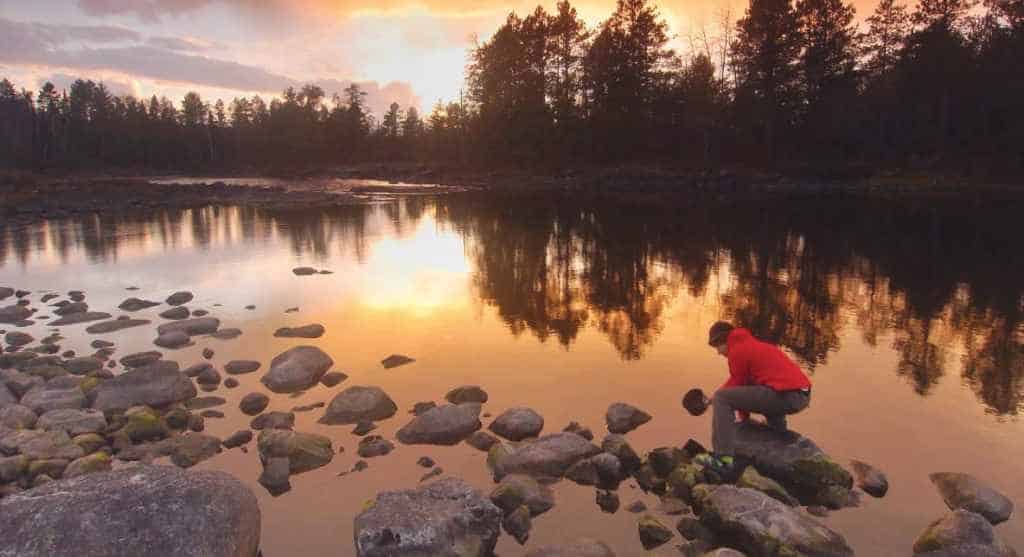
Originally published in Wilderness News Fall 2016

